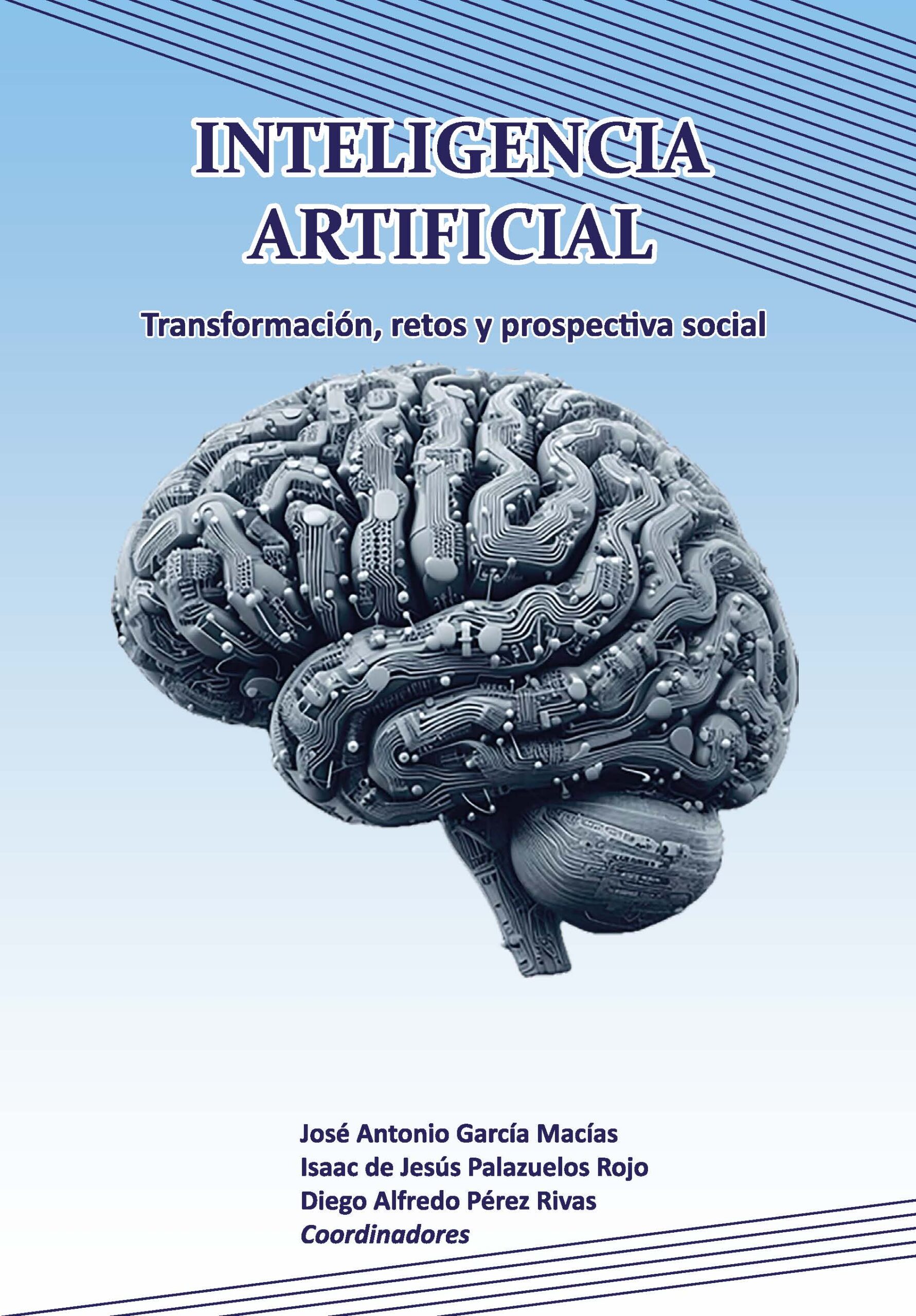
ISBN
Formato digital
978-84-10215-89-4
Fecha de publicación
14-11-2024
Licencia
D. R. © copyright 2024; José Antonio García Macías, Isaac de Jesús Palazuelos Rojo y Diego Alfredo Pérez Rivas.
Jesús Manuel Niebla Zatarain
Facultad de Derecho Mazatlán – Universidad Autonoma de Sinaloa
0000-0001-8460-4538
Virginia Berenice Niebla Zatarain
Tecnológico Nacional de México – Instituto Tecnológico de Estudios Superiores de Los Cabos
0000-0002-0102-1167
Gonzalo Armienta Hernández
Facultad de Derecho Culiacán – Universidad Autonoma de Sinaloa
0000-0002-7729-0195
Acerca de
La ciencia computacional se ha convertido en un componente de la vida social. Como parte de esto, una de los sectores tecnológicos de mayor trascedencia es la inteligencia artificial (IA), la cual ha dado lugar al dearrollo de dispositivos capaces de replicar el razonamiento humano implementado para la resolución de problemas concretos. En este sentido, una de las áreas de implementación más importantes es el derecho, no solo desde una perspectiva regulatoria, sino en el desarrollo de tecnología capaz de mejorar la función judicial como la operación legítima de dichos dispositivos.
No obstante, la primera etapa de colaboración entre estos sectores resultó evidente que el método de representación de razonamiento legal basado en lógica simbólica, si bien era eficiente en términos descriptivos, era poco práctico en términos técnicos. Esto, ya que requería un volumen considerable de recursos para operar, lo que a su vez lo volvía lento y poco atractivo para su implementación fuera de la academia.
Para resolver lo anterior, surge una propuesta basada en modelos estadísticos los cuales, a diferencia de los esquemas tradicionales, permiten la construcción propuestas de conclusión con un determinado nivel de certeza de una manera rápida y eficiente aunque nunca definitiva, lo que expande el ámbito de aplicación de dichos desarrollos. De igual forma, este enfoque resulta compatible con la naturaleza dinámica del entorno digital particularmente, aquellos basados en Internet, los cuales representan el entorno de colaboración más importante en un futuro próximo entre la inteligencia artificial y el derecho.
Referencias
Berners-Lee, T., Hendler, J., & Lassila, O. (2001). The semantic web. Scientific American, 284(5), 34-43.
Brest, P., & Krieger, L. H. (2010). Problem solving, decision making, and professional judgment: A guide for lawyers and policymakers. Oxford University Press, USA.
Buchanan, B. G., & Smith, R. G. (1988). Fundamentals of expert systems. Annual review of computer science, 3(1), 23-58.
Dennett, Daniel C. (2017). Brainstorms: Philosophical essays on mind and psychology. MIT Press.
Groot, P., Stuckenschmidt, H., & Wache, H. (2005). Approximating description logic classification for semantic web reasoning. In The Semantic Web: Research and Applications. Second European Semantic Web Conference, ESWC 2005, Heraklion, Crete, Greece, May 29–June 1, 2005. Proceedings 2 (pp. 318-332). Springer Berlin Heidelberg.
Haenlein, M. y Kaplan, A. (2019). A brief history of artificial intelligence: On the past, present, and future of artificial intelligence. California management review, 61(4), 5-14.
Hitzler, P. (2021). A review of the semantic web field. Communications of the ACM, 64(2), 76-83.
Huntington, D. (2000). Expert systems for online advice: knowledge at your fingertips. PC AI, 14(4), 26-27.
Katz, D. M. (2012). Quantitative legal prediction-or-how i learned to stop worrying and start preparing for the data-driven future of the legal services industry. Emory LJ, 62, 909.
Konar, A. (2018). Artificial intelligence and soft computing: behavioral and cognitive modeling of the human brain. CRC press.
McCarthy, J. (1959). Programs with common sense. En Proc. Symposium on. The Mechanisation of Thought Processes (pp. 77-84). National Physical Laboratory.
McCorduck, P. yCfe, C. (2004). Machines who think: A personal inquiry into the history and prospects of artificial intelligence. CRC Press.
Minsky, M. L. (1969). Semantic information processing. The MIT Press.
Rissland, E. L. (2013). Artificial intelligence and law: Stepping stones to a model of legal reasoning. In Scientific Models of Legal Reasoning (p. 226). Routledge.
Sil, R., Roy, A., Bhushan, B. and Mazumdar, A. K. (2019). Artificial intelligence and machine learning based legal application: the state-of-the-art and future research trends. In 2019 International Conference on Computing, Communication, and Intelligent Systems (ICCCIS), pp. 57-62. IEEE, 2019.
Singh, P., Nayyar, A., Kaur, A., & Ghosh, U. (2020). Blockchain and fog based architecture for internet of everything in smart cities. Future Internet, 12(4), 61.
Smith, R. G., & Baker, J. D. (1983, August). The dipmeter advisor system: a case study in commercial expert system development. In Proceedings of the Eighth international joint conference on Artificial intelligence-Volume 1 (pp. 122-129).
Surden, H. (2021). Machine learning and law: an overview. Research Handbook on Big Data Law, 171-184.
Susskind, R. (1987). Expert systems in law. Oxford University Press, Inc.
Von Luxburg, O. B. U., & Rätsch, G. (2004). Advanced lectures on machine learning. Springer.
Waterman, D. A., Paul, J., & Peterson, M. (1986). Expert systems for legal decision making. Expert Systems, 3(4), 212-226.
Zhou, Zhi-Hua. (2021). Machine learning. Springer Nature, 2021.
